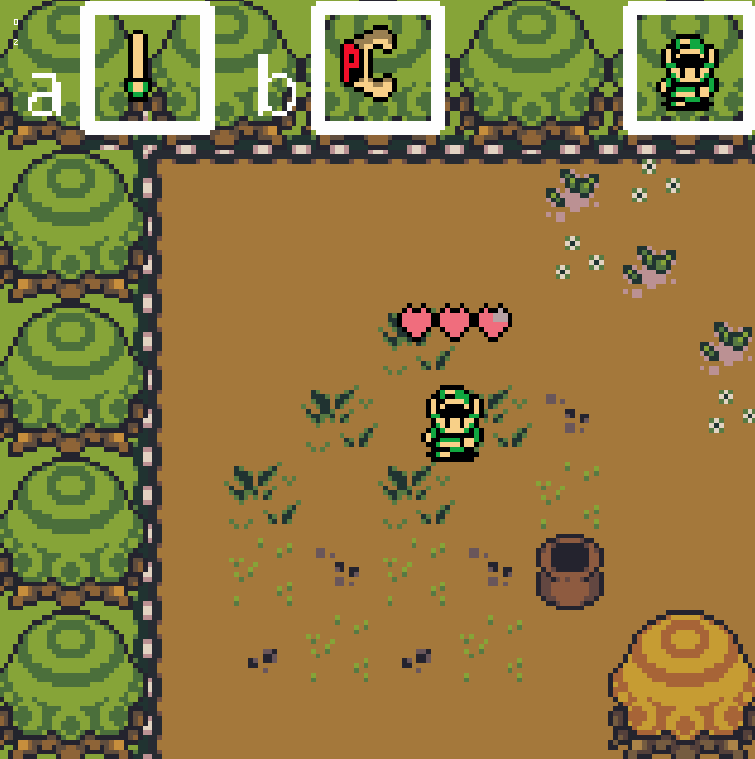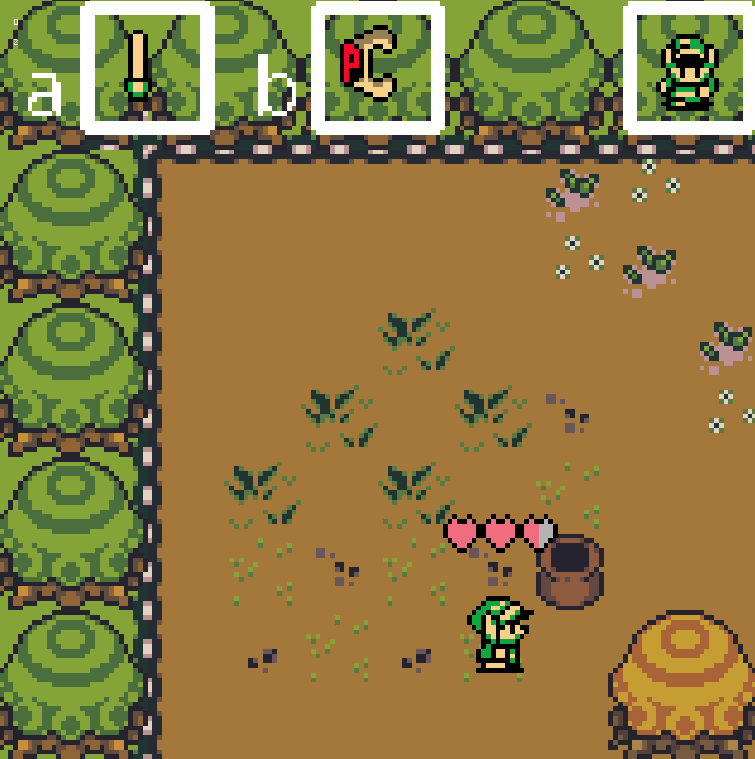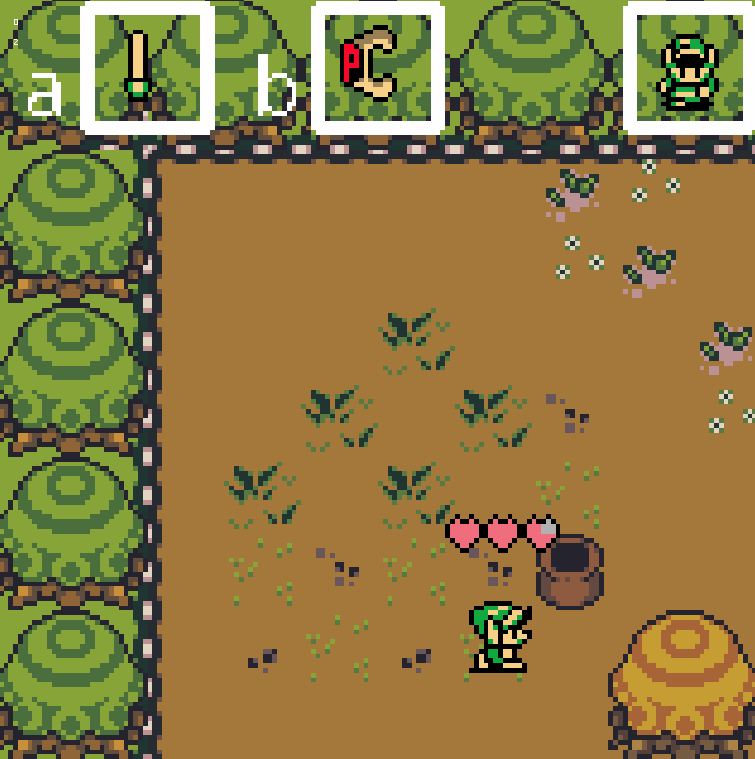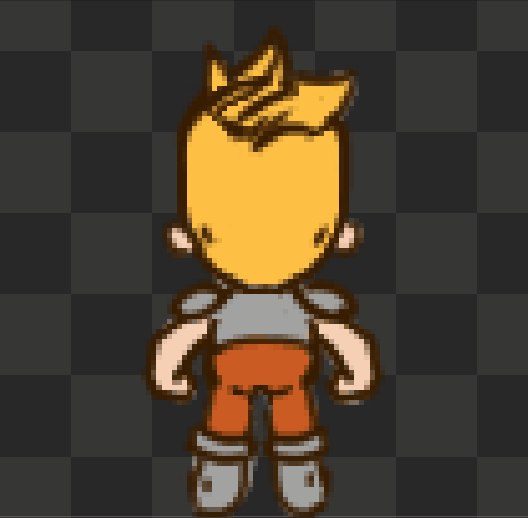Design Brief
A project that started attempting to use very low spec programming style reminiscent of what was done on the GameBoy Color (mirroring sprites rather than having unique assets for each direction, drawing sprites in chunks to reuse some elements).

While this was successful, I wanted to use original art rather than just some ripped sprites from the Oracle games and hit some snags with resolution differences between the original gb sprites (16×16) and the new higher resolution sprites (500×500) since some of the maths for player movement used the sprite size for calculations.
The original elements for the game revolve around there being 4 player characters that the player picks who they start as and rescue the other 3 player characters from the dungeons with each character having an ability unique to them. The design was to lean more on the puzzle and adventure elements like Oracle of Ages was designed for.
Themes and Tone
Discovery through verb based puzzles and finding alternate uses for verbs.
Design Inspirations
Oracle of Ages (GBC) and Prodigal (Steam)
Core Mechanics
Play is done by controlling one of the available characters, from a top down orthographic perspective. Each character has a set active ability and access to a shared pool of tools that they can bind to buttons.

The movement is pretty simple, each character moves about the same speed and has similar weight to their movement.
The 4 characters were split into the following achetypes:
- Swords (direct conflict archetype)
- Dancer (evasion and movement archetype)
- Princess (magic and animal handling archetype)
- Muse (Gentle passage archetype)
With this approach we intended to design paths to the first 4 dungeons requiring the unique tools to each character and unlocking the next character in the first 3 dungeons with the 4th unlocking the way to a final 5th dungeon.
For instance, the dancer can jump 1 tile gaps, allowing them to cross areas the rest of the team can’t, and the process can swap locations with another character with themselves allowing them to also get past those gaps.
One of the core ideas behind this game was that the other player characters would stay where you left them when you swapped control to a different character. Allowing for gameplay where one of the team needs to be left behind to hold down a switch and the rest to advance.
Scope Hope
Secrets for the player to discover by leaving a character on a certain screen and playing as other character only to come back and find something neat, like the muse having a picnic with some bears or something.
Visual Design
Originally using low res pixle art, the project has changed for a softer hand drawn look.
From This

To This:
